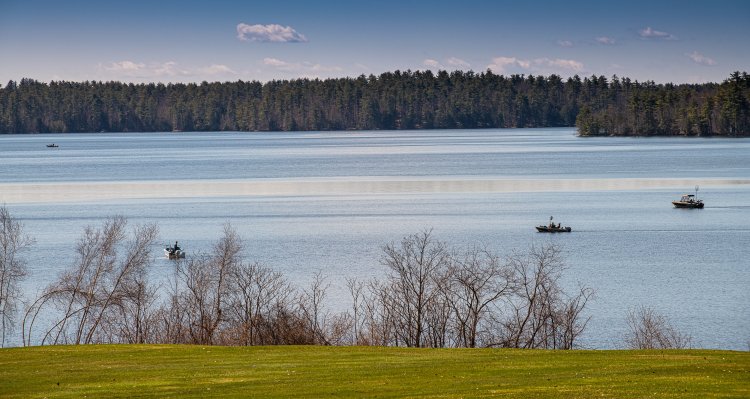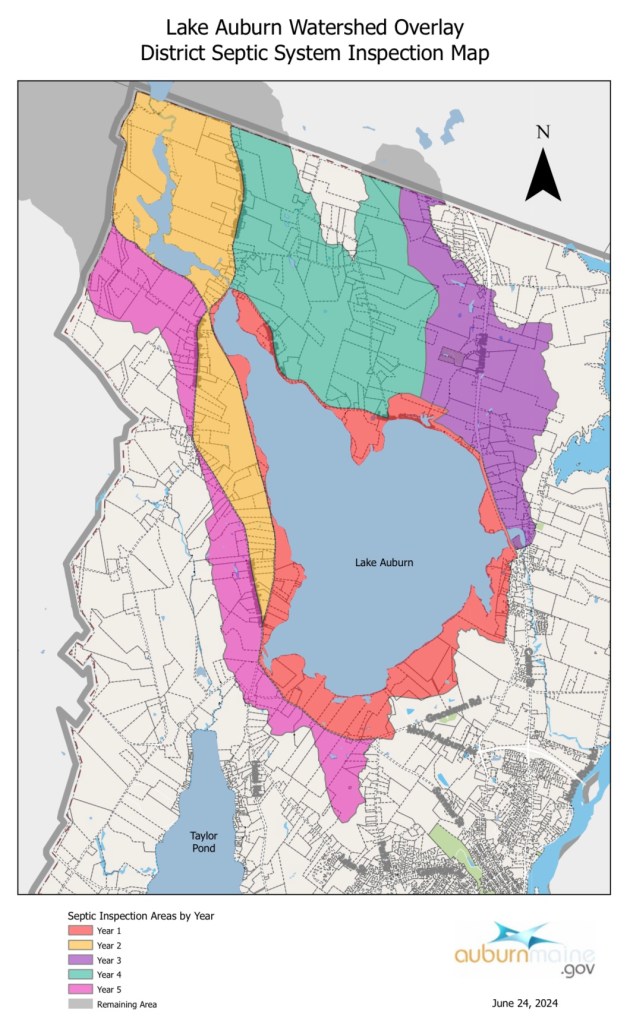
The city of Auburn has notified more than 100 homeowners in the Lake Auburn watershed that they have until July 2026 to complete inspections of their septic systems, but the effort is off to a slow start.
As of this week, seven homeowners have submitted inspection reports after the city issued formal notifications in April. However, city staff is hopeful that more outreach and a financial assistance program can help spread the word and gain compliance.
“We recognize that this is a new requirement for both the city and affected property owners,” said David Hediger, director of planning and code enforcement. “We’ll work to provide support and guidance with assistance from the Lake Auburn Watershed Protection Commission. Ultimately, however, inspections will be required.”
The inspection program was rolled out this year after city officials approved a string of watershed ordinance changes in late 2023 and 2024, which required that all existing septic systems in the watershed be inspected over the next five years, and that any new system installed would have to comply with a new design standard.
The changes were part of an overall effort to reduce the amount of harmful nutrients entering Lake Auburn, which is the unfiltered drinking water source for Lewiston and Auburn, but the updated septic ordinance was part of an often-controversial debate that pitted concerns over watershed protections against wishes to develop housing in the area.
At the time, city staff acknowledged that there likely are septic systems that are failing due to age and the outdated design.
The inspection program finalized last year created a five-year cycle for inspections, with a different section for each year mapped out in the watershed. After the initial inspection, subsequent inspections must occur every five years, unless the property is sold, in which case an inspection must be completed at the time of sale.

Hediger said that so far, property owners in the areas identified as Year 1, which has 67 systems, and Year 2, which has 70, have been notified of the July 1, 2026, deadline.
Property owners receive an initial notice 12 months before their required inspection due date, followed by a second notice six months prior, he said.
However, Hediger said that because of a delay in the rollout caused by staff transitions and the need to coordinate with the Lake Auburn Watershed Protection Commission, formal notifications for Year 1 did not begin until April 2025, so homeowners in both Year 1 and 2 were given until the July 2026 deadline.
As of last month, Hediger said the city had received three inspection reports, so inspections appear to be trickling in.
According to the city, property owners who do not complete the required inspection by the deadline will be in violation of city ordinance.
Hediger said that while the city may issue a notice of violation, “the goal is to avoid enforcement actions by working with property owners, focusing on the importance and goal of protecting Auburn and Lewiston’s source of drinking water.”
When officials were debating the rule change, some argued that the inspection requirement could prove too costly for some homeowners, especially if a new septic system is needed.
Phoebe Hopkins, outreach coordinator for the Lake Auburn Watershed Protection Commission, said LAWPC is offering assistance for homeowners, which can provide a reimbursement for inspection costs of up to $400, as well as “a variety of technical and on-site supports both during and after inspections.”
Hopkins said LAWPC is hosting a public information session about the program at 5:30 p.m. on Oct. 1 at the Auburn Senior Community Center.
Hediger said there are currently an estimated 615 parcels in the watershed, but not all of them have septic systems. Some are vacant lots or are used for agriculture, forestry or other uses that do not require subsurface wastewater disposal, he said. Hediger said each year staff will “refine the property list to focus notifications on those with known or likely septic systems.”
In recent years, watershed staff and environmental advocates have raised the alarm about increased threats to water quality, particularly for bodies of water like Lake Auburn, which relies on maintaining pristine water to sustain a waiver from filtration.
In recent years, increased storms and weather events have forced more stormwater into the lake, bringing more nutrients like phosphorus that produce algae. The new septic ordinance and inspection process was meant as another way to ensure that harmful nutrients stay out of the lake.
For more information on the program, go to auburnmaine.gov.

We invite you to add your comments. We encourage a thoughtful exchange of ideas and information on this website. By joining the conversation, you are agreeing to our commenting policy and terms of use. More information is found on our FAQs. You can modify your screen name here.
Comments are managed by our staff during regular business hours Monday through Friday as well as limited hours on Saturday and Sunday. Comments held for moderation outside of those hours may take longer to approve.
Join the Conversation
Please sign into your Sun Journal account to participate in conversations below. If you do not have an account, you can register or subscribe. Questions? Please see our FAQs.